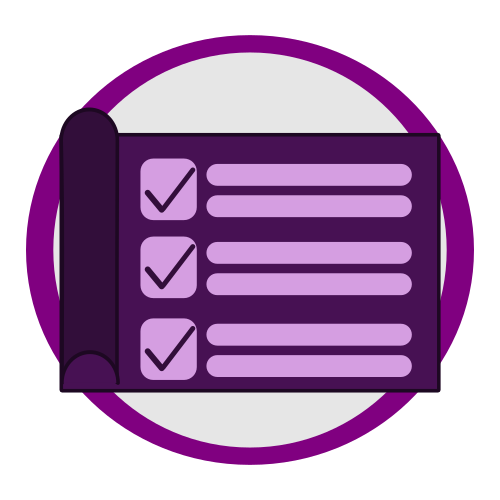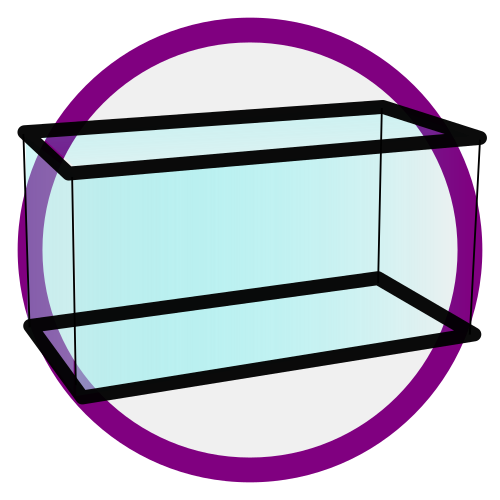7 Reasons Guppies Are Good For Beginners
The Ultimate Guide From Total Noob To Expert
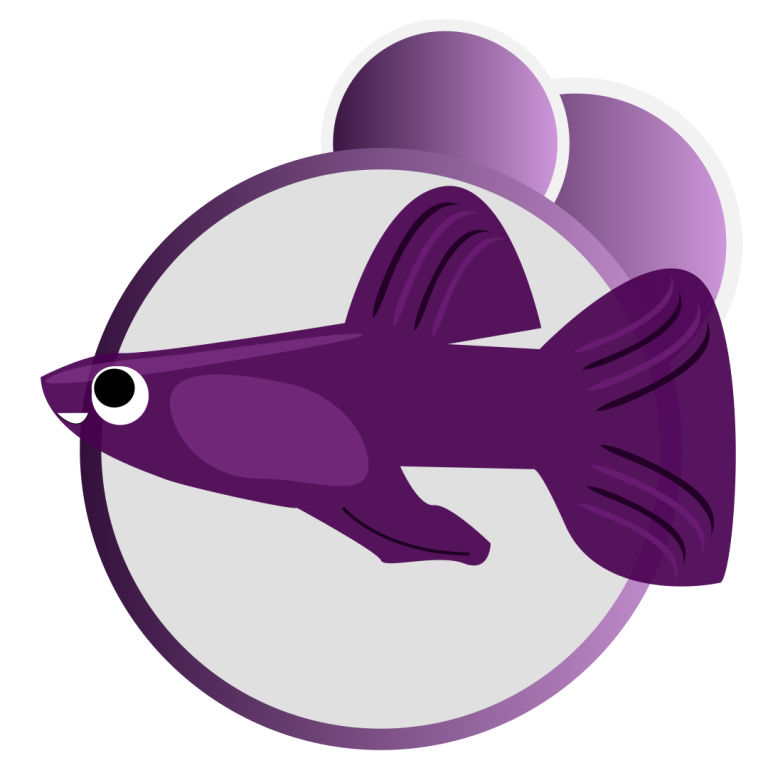
Introduction
Well, hello there!
Since you are reading this, you’re probably in the market for guppies. Maybe you are thinking about getting a tank tomorrow, and maybe you are thinking about getting one down the road.
Both are cool.
In this guide, I’ll teach you everything you possibly need to know about starting a guppy tank as an absolute beginner.
Hi, I'm Shy!
And I like fish tanks.
I like to just sit there and watch the underwater harmony play out.
I’ve had more tanks than I can explain. From small freshwater desktop bowls to saltwater tanks that were big enough for you to put on a swimsuit and get inside to clean it.
Whether you’re a parent getting a tank to teach their kid discipline, or an adult getting into the hobby for themselves- I’ll walk you through every single step of the way.
Guide Overview
What Are Guppy Fish?
Guppy fish are small tropical fish native to the Amazon River in South America.
Known mostly for their vibrant colors, guppies are also very energetic swimmers who love to explore.
They gained a lot of popularity in home aquariums because they are pretty forgiving when it comes to water parameters (unlike saltwater fish).
Pair their low maintenance requirements with their vibrant colors and never-ending curiosity and you got yourself a very good fish for beginners.

Why Are Guppies Popular?
Guppies became popular because of 2 things: their pretty colors and how easy it is to care for them. Guppies continue to be popular because guppies are good for beginners, just learning the ropes.
Unlike saltwater fish, guppies can take a range of water parameters (like temperature and pH, for example) and still be ok.
Guppies are also very fun to feed, mainly because they’ll eat anything from vegetables to live food.
Fun Facts about Guppies
- Guppies are omnivores- meaning they’ll eat both vegetables and meat (more like fish. Aint no burgers underwater)
- They are excellent at mosquito control.
- Guppies can go as long as 2 weeks without food.
- They don’t lay eggs. Instead, guppies give birth to baby guppies called fry.
- They also eat their fry. Yep, you read it right. They don’t connect to their young the way we do and see them as a protein-filled snack.
-
A female guppy can have up to 2000 fry in a single lifetime.


7 Reasons Why Guppies Are Good For Beginners

#1 Easy To Keep Alive
I think the biggest reason why guppies are good for beginners is how hardy they are.
They are known to adapt to a wide range of water parameters, making them forgiving for beginners who may not have mastered the art of maintaining precise water conditions. Guppies can tolerate slight fluctuations in temperature and water chemistry, which is essential for newcomers who are still learning the ropes of aquarium maintenance.
#2 Low Maintenance
One of the biggest advantages of keeping guppies is their low maintenance requirements.
Guppies aren’t demanding when it comes to tank size, water quality, or feeding schedules. That means that a basic tank setup with a filter and heater is usually sufficient to keep guppies happy and healthy.
They are also not picky eaters and will eat almost anything you’ll feed them. That makes them fun to feed with kids, as they’ll eat anything from commercial food to vegetables.
#3 They Are Very Entertaining
Guppies are known for their vibrant colors and striking patterns, which was enough for me to first get started with the hobby.
They come in a wide range of hues, including red, blue, green, yellow, and combinations of these colors. Guppies are often referred to as “rainbow fish” because of the brilliant array of colors they exhibit.
What’s more, guppies are known to swim all across the tank and in between all levels. That means you can spend hours watching them and never get bored.
#4 Longevity Built In
Once you get a set of guppies you can pretty much have guppies for the rest of your life. While they only live 2-3 years, they reproduce very quickly.
You can plan on adding about 10 new guppies every month, conservatively.
We will talk more about how to control the population and how to plan to keep their reproduce numbers down.
#5 Community-Friendly
Guppies are known for their peaceful and friendly nature. In the event you decide your life is incomplete without a monstrous tank that cannibalizes your living room you’ll be able to move your guppies into your new tank.
Guppies are compatible with a wide variety of tankmates, including other community fish like tetras, mollies, and platies. Their non-aggressive disposition makes them an excellent choice for a mixed-species tank, as they tend to coexist peacefully and promote a harmonious aquarium environment.
#6 Educational Value
For novice aquarists, guppies offer an excellent opportunity to learn about fish behavior, biology, and basic aquarium maintenance.
Their easy-to-observe activities, such as swimming, feeding, and breeding, can provide valuable insights into the aquatic world, fostering a deeper appreciation for the hobby.
#7 Cost-Effective
Guppies are an affordable option for beginners. Their relatively low purchase price, coupled with minimal ongoing expenses, makes them an economical choice for those starting out in the hobby.
This affordability allows you to invest in essential equipment, such as a proper tank, filter, and heater, without breaking the bank.
Can Guppies Live in A Bowl?
The short answer is no. The long answer is noooooooo.
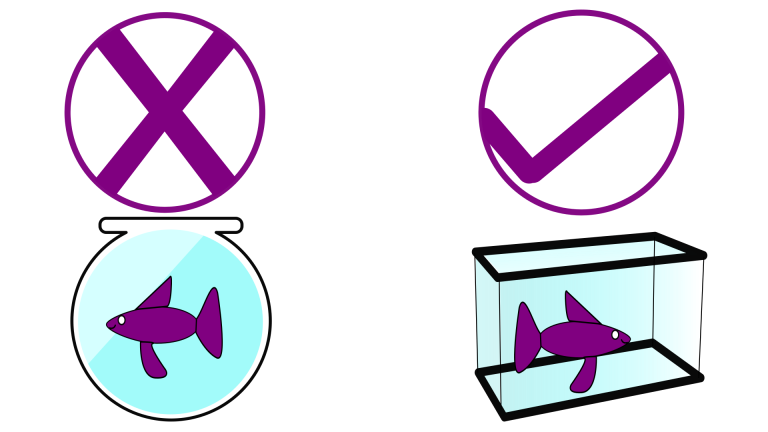
Guppies need to live in a group to thrive. While they are not schooling fish per se, they still require a group setting to prevent unnecessary stress.
Guppies also require a constant water temperature which calls for a heater.
You’re simply not going to have enough space for a heater, fish, and plants in a bowl.
And even if you did magically find a way to cramp all of that in one bowl- you’d still have to change the water 2-3 times a day or your fish will die.
That’s why a 10-gallon tank is the bare minimum for guppies.
What's The minimum tank size for guppies?
Guppies require a minimum of a 10-gallon tank to thrive, which is yet another reason why guppies are good for beginners.
A couple of reasons create this requirement, and guppies being social fish that require living in a group is one.
The other is their need for hiding spaces- guppies are often prey in nature. That means they are prone to stress- which is their number 1 silent killer.
In order for guppies to live a happy life they have to have plenty of hiding spaces. Those come in the form of tank décor and plants- which all take up space.
How Many Guppies For A 10-Gallon Tank?
You can plan for 5-7 guppies in a 10-gallon tank.
The general rule of thumb is one inch of fish per gallon. With guppies growing between 1.5-2 inches you get to that 5-7 range.
What's The Best Male To Female Ratio?

Get 2-3 females for every male.
This is important because male guppies get very persistent during mating time, and they can easily overwhelm a female. While guppies are not aggressive fish in nature- males can become aggressive if the competition for females is fierce.
I know that this isn’t amazing news because males are the ones with beautiful tails, but this is important if you want to keep your tank healthy.
If you are getting a 10-gallon tank, then get up to 2 males and about 4-5 females.
How Long Do Guppies Live
A typical life span for guppies is about 2-3 years.
I’ll also mention that guppies are notorious for their rapid breeding. That means that if you breed them successfully you can have a lifetime supply of guppies.
In other words, the guppies you started with won’t necessarily be the guppies you ended with, but you’ll always have guppies in your tank.
Whether it’s a good thing or a bad thing is up to you.
What Do Guppies eat
Guppies require a diet that is high in protein. The simplest way to achieve it is with commercial fish food. Here are some things you can feed your guppies to make them happy:
Commercial Fish Food
Make sure it’s designed for tropical fish or guppies specifically. Don’t feed them goldfish food. Whether you get pellets or flakes doesn’t matter and is more of a personal preference.
Live Food
Live Food. This is what guppies eat for the most part in the wild. This includes brine shrimp, daphnia, vinegar eels, or micro worms. Heck, guppies will even eat their own babies (called fry)- but we’ll touch on that later on.
Out of all of those, brine shrimp are the least annoying to prepare. It’s a rather cool process that doesn’t require much space or create obnoxious smells like daphnia or vinegar eels do.
You can also freeze live food leftovers and serve them later as what others in the hobby call frozen food.
Live Food
Guppies are natural munchers and while they gnaw on the plants you have in the tank they’ll also appreciate peas, carrots, cucumbers, blanched kale, and spinach.
What Equipment should I plan for?
We’ll be talking about equipment in great detail in the next part of this guide, so for now, I’m just going to mention this outline:
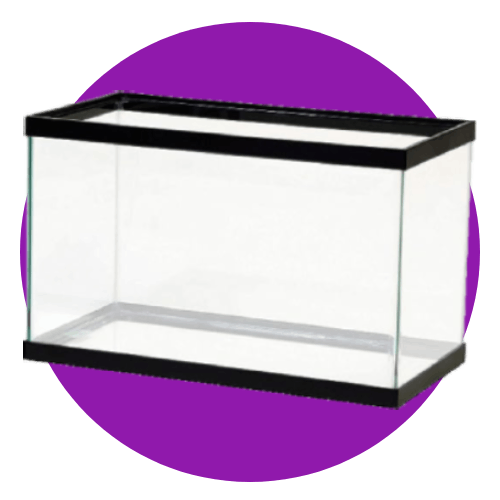
Tank
Preferably made from glass- to house your guppies.
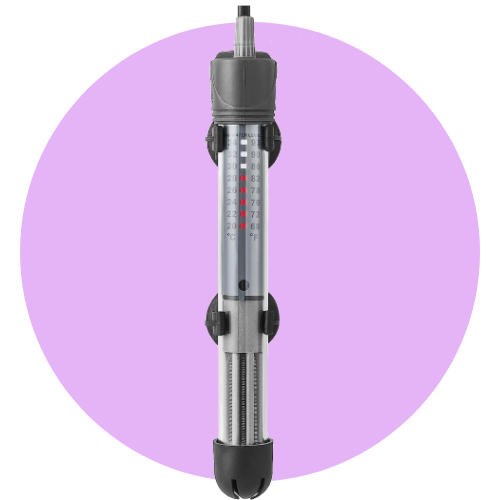
Filter
To keep your tank stable and cut down on maintenance time.

Heater
Keeping a constant water temp prevents diseases.
Other Equipment You Might Need

Plants
Plants help filter the water, infuse it with oxygen, and provide a hiding space for guppies.
On the flip side, they require a light source and may create pollution if they die and are not removed. Read the Guppy Plant Guide to learn more.

Lights
Lights will be needed if you choose to use live plants. They aren’t really expensive but can add a few bucks to your total set-up cost.
On the other hand, lights allow you to place your tank in many places where natural light might not get to. More on that in a second.

Siphon Pump
Makes cleaning easier
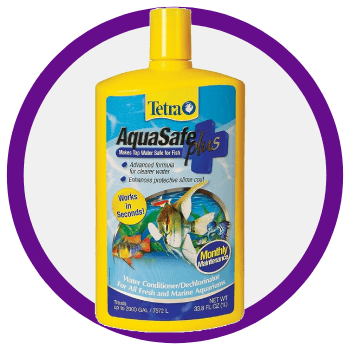
Conditioner
Turn tap water into tank water

Bucket
For water changes

Fish Net
To move fish safely

Tank Decor
To make the tank pretty and fun
Can I Just Get One Guppy?
Having a single guppy tank is a recipe for disappointment.
Guppies are a social fish that thrives in community, which means they need to live in a group in order to feel safe and avoid unnecessary stress.
So, nope. You can’t just have one.
Where Should I put My New Tank?

Your new tank should go in a shaded area, placed on a stable object.
Most people end up putting in on a drawer or a table.
It’s important that you do not place your tank near a window, and away from natural sunlight.
The reason for it being that the sun will not only create water temp fluctuations but also most likely overheat the tank during the day.
This is why we use lights and a heater- they will also provide you a peace of mind.
If Guppies Are Good For Beginners- Are They Good For Kids?
Guppies are excellent for kids because they are colorful, energetic, and very easy to keep alive.
They are a great way to teach kids to develop responsibility- although don’t plan on your kid carrying out all the responsibilities of caring for the fish.
While what happens 99% percent of the time is that you will be done doing all the work, it is still a great activity to do together with your little one nonetheless.
Is There Any Gross Stuff Involved?
Caring for guppies doesn’t include any gross stuff. Unless you sniff their food, which can be a little fishy- you’ll be good.
The only thing that might be a little gross is dead fish. They happen, and sometimes you might need to euthanize sick guppies.
Besides that, even their poop cleanup isn’t all that gross- the siphon pump and your filter do all the heavy lifting for you.
How Many Hours Does Caring For A Tank Take?
A balanced guppy tank should only take about an hour to two hours a week to maintain. Bear in mind that it can take about five to six weeks to get there, which means that in the beginning, it might be a little more.
Here are some of the tasks you’ll need to complete on a regular basis:
Feeding
Feeding guppies is a quick task that can be done once or twice a day, depending on your feeding schedule. It usually takes just a few minutes each time.
Water Changes
Regular water changes are crucial for maintaining good water quality in the tank. Depending on the tank size and stocking levels, a weekly water change of about 10-20% is recommended. The time needed to perform a water change can vary but typically takes around 20-30 minutes.
Cleaning
Routine cleaning involves removing debris, uneaten food, and excess waste from the tank. This can be done during water changes or as needed and usually takes around 10-15 minutes.
If your guppy tank includes live plants, some additional time may be needed for pruning and plant care. The time required will depend on the number and type of plants in the tank.
Filter Maintenance
The filter should be checked regularly to ensure it is running smoothly and efficiently. Depending on the type of filter, maintenance tasks like cleaning or replacing filter media might be required once a month. Filter maintenance can take around 10-15 minutes.
Monitoring
Monitoring the tank regularly for any signs of disease, abnormal behavior, or water quality issues is essential. Observing the fish and checking water parameters can be done during feeding or cleaning times and takes a few minutes.
Plant Care (if applicable)
Routine plant maintenance typically takes around 15-30 minutes every week.
You can expect to be trimming overgrown or decaying leaves, removing dead plant matter, and replanting or rearranging as needed.
It’s also essential to monitor the overall health of your plants and address issues like nutrient deficiencies or algae growth, which may require occasional adjustments to lighting, fertilization, or carbon dioxide injection
The Cons of A Guppy Tank
And why they make guppies good for beginners.
Two common annoyances with owning a guppy tank are their breeding habits and diseases
Disease
Guppies, just like any other animal, are susceptible to disease and illnesses.
You’ll know your guppy is sick when they change in behavior- mostly stop eating, change their swimming pattern or develop visible signs of sickness.
In that case, you’ll need to spend a little more time to care for your sick guppy. Do know that most illnesses are preventable with good tank conditions. And also know that a lot of beginners do end with a sick fish here in there- because they are beginners.
Over-breeding
Guppies are notorious for multiplying very quickly.
As we’ve learned before- you can plan on at least 10 new guppies every month in your tank. And those will be the ones who survived, from 100+ that were born. An overpopulated tank poses a problem of stress for everyone living in the tank.
Euthanasia
Since we are on the topic of overbreeding, euthanasia is a topic that is closely related.
You need to pull the plug on some of your fish. Not because of anything, but because guppies reproduce very fast. Euthanaisa is easy- you don’t need an axe or a lethal injection- just putting a fish in a solution of water and clove oil will do the trick.
But the hard part is choosing which one.
Conclusion
Why Guppies Are Good For Beginners
We’ve covered a lot here, so let’s recap-
Guppies are good for beginners because they are easy to keep alive, don’t require specialized care, and are inexpensive to get into. You can get into the hobby for as low as 150 bucks, with 200 dollars being ample.
The negative side of owning guppies is that they can become ill and reproduce like crazy- which may call for you to euthanize some fish from time to time.
Now that you’re armed with this knowledge- what is your next step? Let me know in the comments below!





